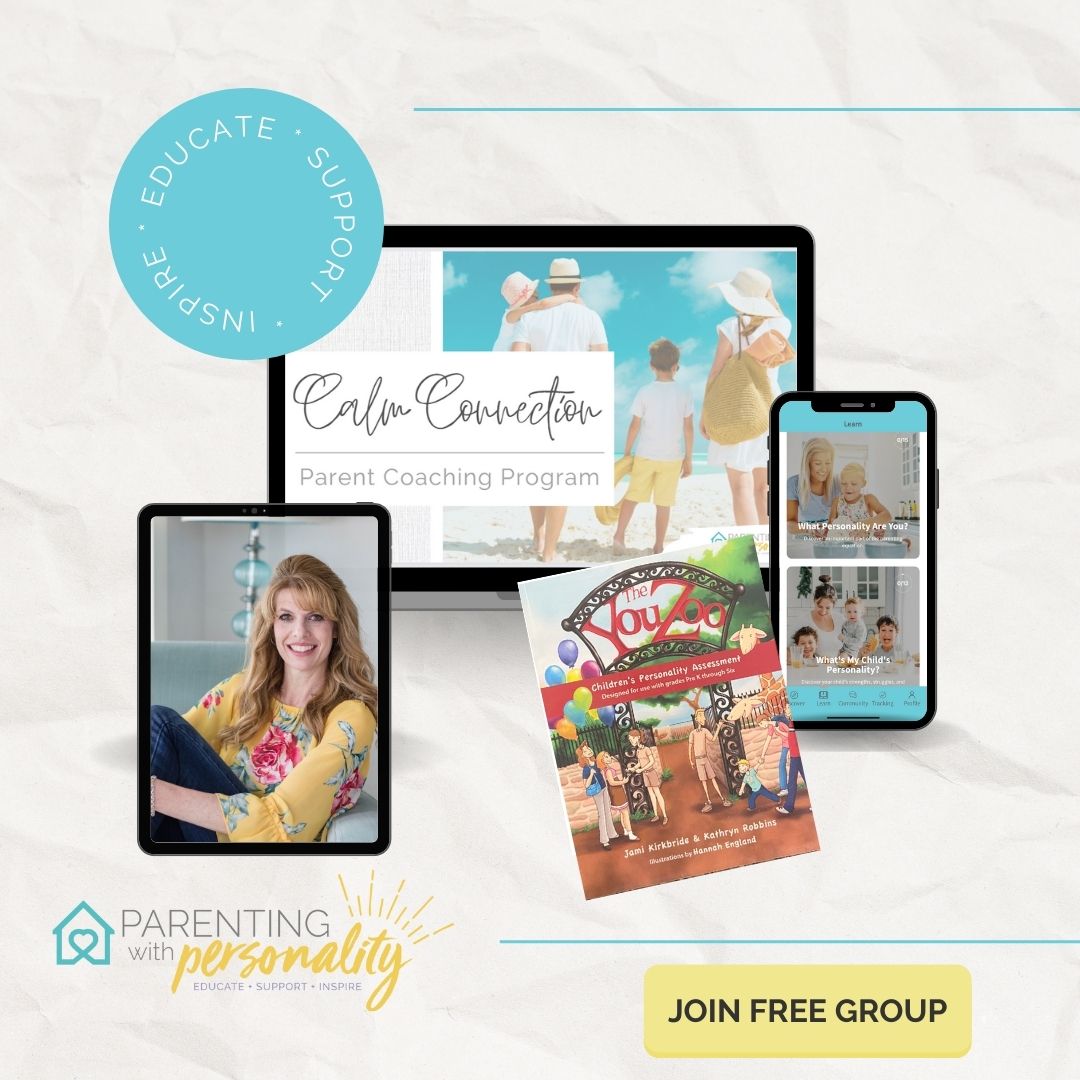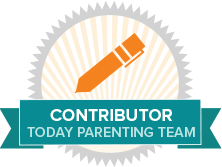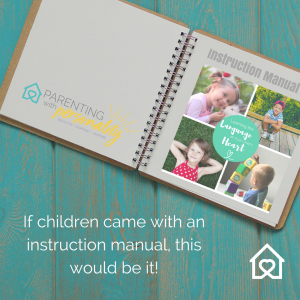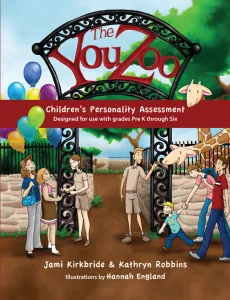It’s back to school time! And oh, the myriad of emotions that can surge! You might feel a sense of awakening and excitement with the opportunity of what I call the “Mom’s New Year!” Yes, this season kind of brings about what for many is like New Year’s and New Year’s Resolutions. It is a beginning, a new chapter, new doors, and for some new seasons. At this time of year, there are parents who are sending their child off to kindergarten, junior high, high school, and college. And for some, this might be a new era of personal transitions, roles, and even new positions or jobs. It also tends to serve as a time that we can refocus, refresh, and reset to those things that we want to be more intentional in doing or even stop doing. So instead of feeling the back to school blues that feel dreary, you can imagine the cool and relaxing hue of blue! Knowing you can kick back and enjoy the ride!
You might feel some sadness as the fun, lazy days of summer draw to a close, and you realize that family time will be different now. Perhaps you feel relief that the busy summer schedule and extra demands will be lightened just a bit, as will the mess of everyone home all day! You could feel overwhelmed at the schedule of activities that you face during the school year. You may feel a change in the role you play in your child’s life or even in how much you perceive others need you. So undoubtedly, this can be a time of great reflection.
But we don’t need to feel dreary or dread. We can feel prepared and ready for growth! I think there are two crucial ways we approach this back to school time. One relates more to our parenting tasks, school issues, and scheduling. The other pertains more to us as individuals, parents who are still in the process of growing and becoming! Part 1 of this three-part series is going to deal with the more child-focused issues. Part 2 will deal more with the emotional and transition issues for parents. (So be sure to check back next week to get the whole story!)
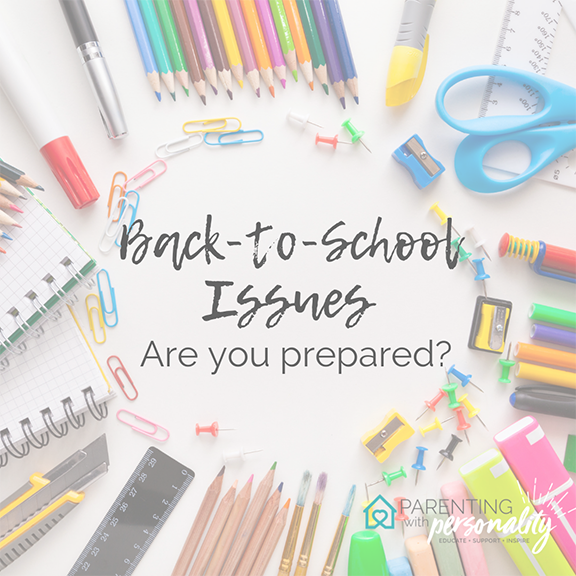
Going back to school can increase anxiety and tension in the home. I know for our kids, there is great anticipation to get back to friends and activities. But there was also for a couple of them, some anxiety around new teachers, new expectations, and new schedules. Starting new routines and forging new paths can feel a bit scary. Some kids’ personalities will handle this in stride and even be excited by the changes. Others will struggle a little more with the change and transition times. And if you have a child with special needs (whether visible or invisible) this time can feel very challenging to them, and the entire family, as you help them adjust.
Some of the biggest issues we face in a new school year might relate to bullying, busy schedules, limited family time, homework meltdowns, worn out kids, and teacher-child relationships. So let’s take a moment to consider each of these areas and I will share some practical tools that can help you navigate the course.
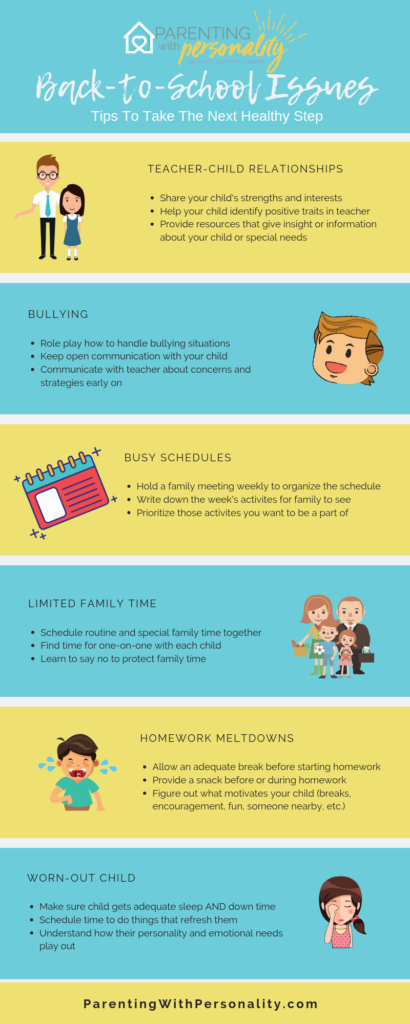
Bullying
- Role-play how to handle bullying situations
- Keep open communication with your child
- Communicate with the teacher about concerns and strategies early on
Busy Schedules
- Hold a family meeting weekly to organize the schedule
- Write down the week’s activities for your family to see
- Prioritize those activities you want to be a part of
Limited Family time
- Schedule routine and special family time together
- Find time for one-on-one with each child
- Learn to say no to protect family time
Homework Meltdowns
- Allow an adequate break before starting homework
- Provide a snack before or during homework
- Figure out what motivates your child (breaks, encouragement, fun, someone nearby, etc.)
Worn-out Child
- Make sure your child gets adequate sleep AND downtime
- Schedule time to do things that refresh them
- Understand how their personality and emotional needs play out

Teacher-Child Relationships
- Share your child’s strengths and interests
- Help your child identify positive traits in a teacher
- Provide resources that give insight or information about your child or special needs that exist
*You might even consider gifting them a copy of The You Zoo! It is something I have gifted to my children’s teachers over the years, to help them understand not only my child, but other children, and even their own! Teachers have commented on what a great resource it has been in the classroom and at home!
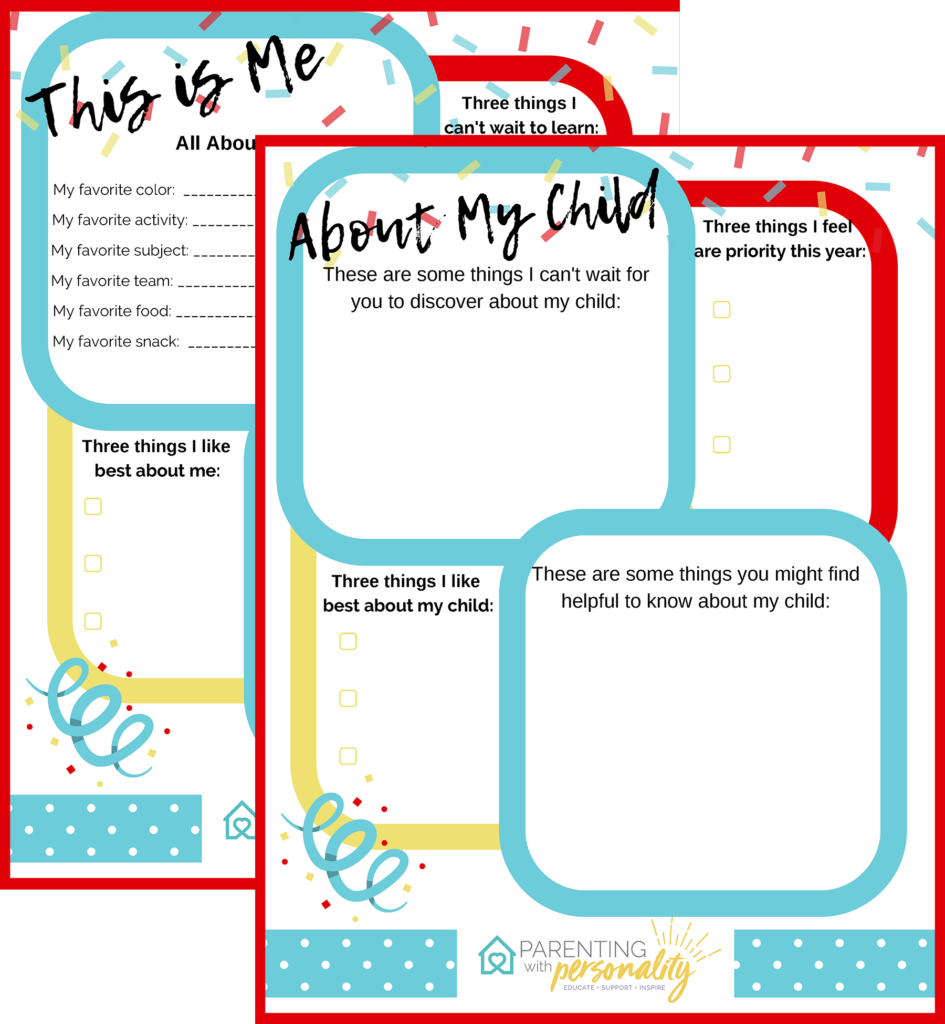
I thought you might also like this quick and easy FREE resource to use with your child and his/her teacher! One sheet your child fills out and one sheet you fill out! It’s a fun way to help your child’s teacher get acquainted with your child. Click here to register to get instant access to the full-size download. You will receive access to the member-only free resource page where you will find this and many other free parenting resources. You will receive weekly emails letting you know when new resources are available and notifications about special events. Learn more by clicking here. We had fun and laughs sharing our answers when we were finished together too!
The start of each new school year and a new teacher can bring about a sense of apprehension. Perhaps you have had a bad experience with a teacher in the past or maybe you just have heard others discuss the struggle. Most parents have put some time into thinking about the connection the teacher and your child will have. A great teacher can be a true gift! And a rocky combination between teacher and child can cause a year to drag with dread and heartache.

You may feel some initial anxiety and worry as you start to watch and wonder what that relationship is looking like. It is okay to acknowledge that. As the year progresses, you may feel other things, gratitude, of course, but also some frustration, anger, or confusion to name a few. Once you acknowledge your feelings, you can then decide how much weight or energy that feeling needs to carry into the situation.
So, what if something happens in one of these areas and you are overwhelmed with emotion, feel like something needs to change, or you must address it. Well, I’d like to share a helpful strategy that you can use no matter which of the issues you may face. It’s not often you find a simple three-step strategy that can have such flexibility. In fact, you might just find these three steps helpful and effective in other areas of life as well! I mentioned them above, but you might not have caught them. So let’s break the three steps down.

Step one, I encourage you to stop and identify or acknowledge the feeling. Often, we face a struggle, and we are set in motion to fix or change things. Unbeknownst to us, our emotions or feelings might be the driving force. And without another thought, we may quickly react with that emotional energy driving us. Sometimes, that reaction can be too quick, misdirected, or problematic. Yet if we stop and acknowledge or identify our feeling, we accomplish two things. We inventory what feeling might be driving a reaction, but we can also acknowledge the feeling and slow to down choose our response.
This small step might be the first thing that sets us on a healthy vs unhealthy path. Now I am not saying we deny a feeling. We might need to acknowledge it, allow ourselves some time with that, and then choose to move on. Sometimes the mere act of acknowledging or giving yourself permission to feel something can help you move through it rather than get stuck in it.
There are things that might make us feel angry. Acting out of that anger might cause us to choose words we wouldn’t otherwise. But identifying our anger can help us dispel a bit in a healthy manner and then choose which direction from there. In this way, our emotions are not in the driver’s seat!
Step two, after acknowledging or identifying the feeling, we can choose our perspective. This includes how we think about things, talk about things, and even the quiet, yet powerful self-talk that continues in our head. We choose at this point to drop any unhealthy or inappropriate thoughts or self-talk. Slowing this emotion down and choosing our perspective allows us to factor in what we truly desire or where we want to end up. By doing this, we become more intentional and healthier.
So, we might walk away from a situation in which we identify feeling hurt. We may tell ourselves that the other person intentionally hurt us. We can continue that course in our mind or we can choose to do various other things. We might consider checking it out with them (or communicate calmly about it), figure that it was a mistake or misunderstanding, or choose to just let it go. But then when our mind starts wandering down that path again, we remind ourselves of our better perspective, the one that keeps us in a healthy and productive place.
Step three, we choose to move on to our next healthy step. If we decide to talk to them, we may first set out some thoughts on paper, pray about it, or mentally walk through that conversation. Then we take that next step. If we decide to let it go, we may journal about it, pray about it, or just choose to stop going over it and finding something else to occupy ourselves with. That next step needs to be something that helps us move, not just inactive, but a step in the other direction.
Let’s put our above strategy into place as we deal with a challenge in the teacher-child relationship area. Your child comes home from school one day and is tearful. He feels very upset about an incident in which the classroom teacher hurt his feelings. It might be that you are feeling protective, angry, hurt, sad or confused. When you identify that feeling, you can then choose your perspective.
“I feel protective when I think someone hurt him.” Or “I feel angry at the possibility of these words being spoken to my child.” Or “I feel confused that she would treat him this way.” These might be the way you acknowledge your feelings.
Then you might spend a couple of moments choosing a healthy or helpful perspective. “It could be that my child misunderstood.” Or “Perhaps there is more to the story.” Or “Maybe she didn’t know that would be hurtful.” Or “This appears to be a pattern that I might need to talk with her about.” It can be a number of things. Stopping and choosing your perspective will be very helpful. Then you can decide how to progress from there.

The next step you choose may involve resolution in your own mind, a phone call, email, face-to-face visit, or maybe just a discussion with your child. Depending on the situation, you can respond in a number of ways. But when you stop to consider your feelings and choose your perspective, you will be more likely to choose the next healthy step instead of just reacting.
Back to school can bring about some anxiety and worries. Those emotions can lead to us feeling a bit blue. But the next time you hear back to school blues, maybe instead you can choose the perspective of the ocean calm or relaxing blue sky…knowing that you are ready and prepared for what lies ahead! So relax and enjoy the ride!

Now don’t forget to tune in next week for Part Two …Back to School Blues (and not the dreary kind!) that might relate more to you personally.
Let’s Do This!

P.S. Until Next week; you may enjoy revisiting this blog post: The Best Back to School Traditions

